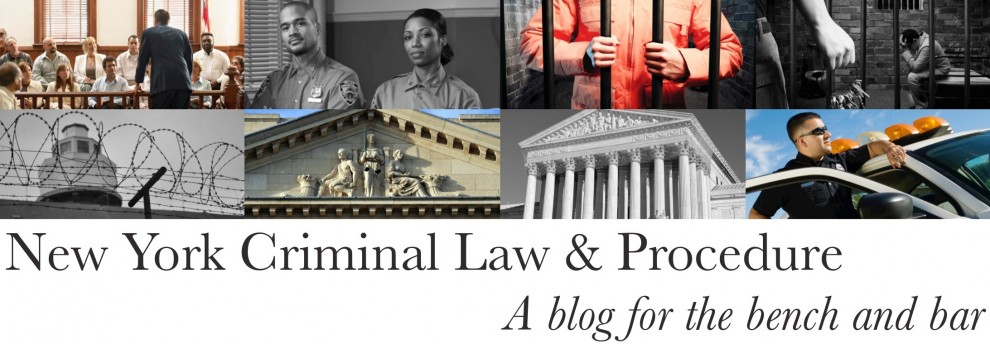In People v. Rosado (1st Dept. 10/4/2011), the issue for the court was whether the People proved the existence of a serious physical injury. After he sustained the injuries, the victim underwent surgery on his nose. The surgery was successful and, apart from a slight indendentation in the nose, he did not suffer any lasting effects. The indentation did not qualify as a serious disfigurement because a "reasonable observer" would not find the "altered appearance distressing or objectionable." In addition, the victim's three chipped teeth did not rise to the level of serious injury. Accordingly, the Defendant's conviction was reduced to Assault 3º, a misdemeanor. (LC)
Editor & Author

Larry Cunningham
Associate Dean for Assessment and Institutional Effectiveness
Professor of Legal Writing
Director, Center for Trial and Appellate Advocacy
St. John's University School of Law
Profile
Twitter
E-MailContributing Authors
Fellows of the St. John's Center for Trial and Appellate Advocacy
-
Recent Posts
Categories
Advice App. Div. 1st Dept. App. Div. 2d Dept. App. Div. 3d Dept. App. Div. 4th Dept. App. Term 1st Dept. App. Term 2d Dept. Appellate Procedure Blog News Case Summaries Civil Law Collateral Relief Commentaries Constitutional Law Criminal Procedure Law Ethics Evidence Juries Mental Illness N.Y. Court of Appeals New Decisions New Legislation News Penal Law Second Circuit St. John's Suppression Trial Courts Uncategorized Vehicle and Traffic LawFollow the Blog Via RSS
Blogroll


Reversal for right to public trial violation
In a very brief opinion, the First Department reversed the conviction in People v. Gray (1st Dept. 8/18/2011) because the trial court ordered the complete closure of the courtroom during the undercover's testimony. The Defendant requested that certain family members be allowed to stay, but the court summarily rejected the request without comment. Of particular concern to the First Department was that "the record does not otherwise show that the court considered whether there existed any reasonable accommodations that would have protected the public nature of the criminal proceedings." The court reiterated that "trial courts are required to consider alternatives to closure even when they are not offered by the parties."
The lesson for trial courts and for prosecutors is to make a proper record that explicitly considers alternatives to complete closure. (LC)
Leave a comment
Posted in Advice, App. Div. 1st Dept., Case Summaries, Commentaries, Constitutional Law